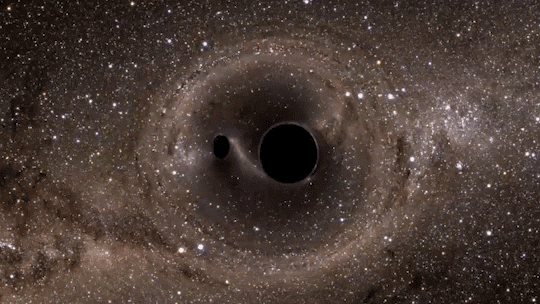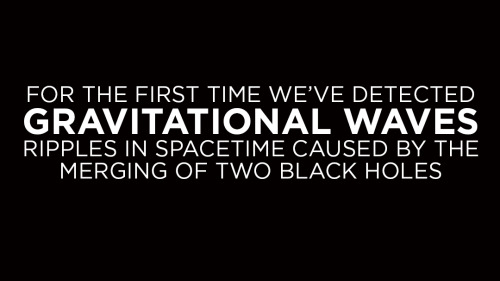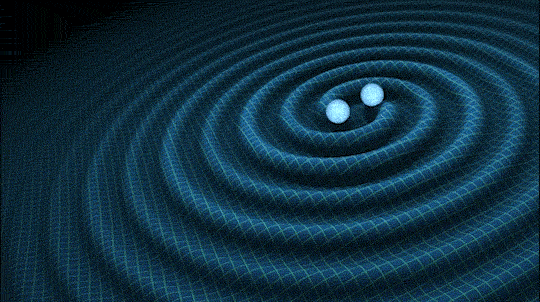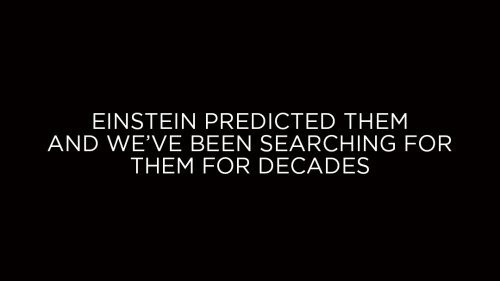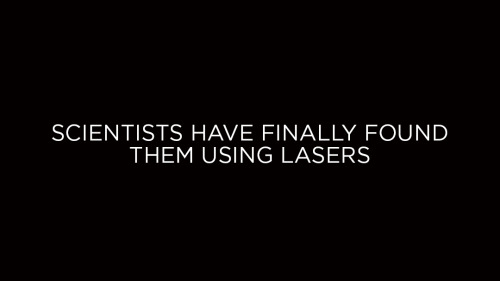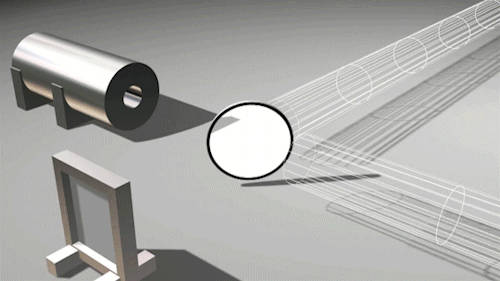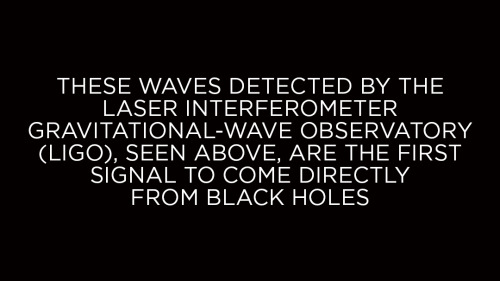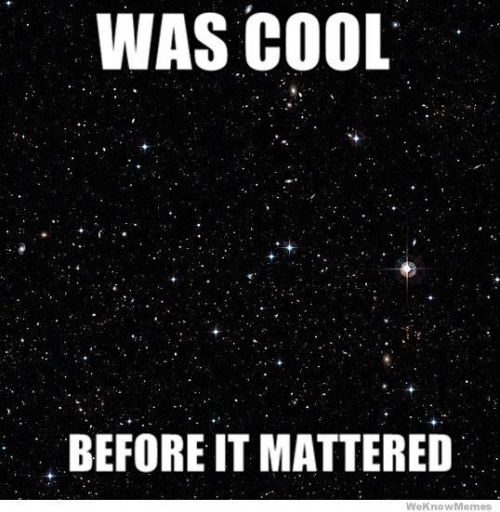Paranal Red Sprites


Paranal red sprites
First imaged in 1989, red sprites are a ghostly phenomenon that occur at high altitudes above thunderstorms. Photographed here by ESO Photo Ambassador Petr Horálek, the unmistakable tendrils of multiple red sprites are spotted approximately 600 kilometres away from ESO’s Paranal Observatory above distant thunderclouds.
To capture multiple sprites in one image, two exposures were combined. The upper sprite occurred nearly 21 minutes before the lower one.
In the foreground sits a lone 1.8-metre Auxiliary Telescope, part of ESO’s Very Large Telescope (VLT).
Credit: P. Horálek/ESO
More Posts from Sansbook and Others
Reid Wiseman Vines: That’s not the Sun, it’s the Moon setting on a gorgeous night.
Three quarks for Muster Mark*! And for every proton and neutron, too… right?
Not so fast. You might have learned that every proton and neutron is made of elementary particles called quarks, and that each of the familiar subatomic bits that make up the nucleus of atoms is built out of precisely three of the quirky, quarky sub-subatomic bunch.
This great video from The Physics Girl explains why that idea doesn’t quite add up to what’s really going on at matter’s smallest scales. Plus, CANDY! I love candy! Just wait ‘til you get to the part about how much mass is inside of a proton compared to the number of particles. Mind = blown, Einstein.
*Funny historical note: At the beginning of the video, Dianna asks why “quark” is spelled the way it is. It looks like it should be pronounced “kwahrk,” but we clearly pronounce it “kwork”. Well, Murray Gell-Mann, the physicist who first theorized the existence of these elementary particles, had already picked out the name he wanted, a made-up word that he pronounced “kwork”, but with no idea how he should spell it. Then, while reading Finnegan’s Wake by James Joyce, he stumbled on the following passage:
Three quarks for Muster Mark! Sure he has not got much of a bark And sure any he has it’s all beside the mark.
Gell-Mann stuck to his guns on the “kwork” pronunciation, despite the fact that it’s obviously supposed to rhyme with “Mark”, but seeing that Joyce had stumbled upon the same rule of three quarks that the universe had, he couldn’t pass it up. Quantum literature!

Associated Press
GENEVA — Physicists on the team that measured particles traveling faster than light said Friday they were as surprised as their skeptics about the results, which appear to violate the laws of nature as we know them.
Hundreds of scientists packed an auditorium at one of the world’s foremost laboratories on the Swiss-French border to hear how a subatomic particle, the neutrino, was found to have outrun light and confounded the theories of Albert Einstein.
“To our great surprise we found an anomaly,” said Antonio Ereditato, who participated in the experiment and speaks on behalf of the team.
An anomaly is a mild way of putting it.
Going faster than light is something that is just not supposed to happen, according to Einstein’s 1905 special theory of relativity. The speed of light — 186,282 miles per second (299,792 kilometers per second) — has long been considered a cosmic speed limit.
The team — a collaboration between France’s National Institute for Nuclear and Particle Physics Research and Italy’s Gran Sasso National Laboratory — fired a neutrino beam 454 miles (730 kilometers) underground from Geneva to Italy.
They found it traveled 60 nanoseconds faster than light. That’s sixty billionth of a second, a time no human brain could register.
“You could say it’s peanuts, but it’s not. It’s something that we can measure rather accurately with a small uncertainty,” Ereditato told The Associated Press.
If the experiment is independently repeated — most likely by teams in the United States or Japan — then it would require a fundamental rethink of modern physics.
“Everybody knows that the speed limit is c, the speed of light. And if you find some matter particle such as the neutrino going faster than light, this is something which immediately shocks everybody, including us,” said Ereditato, a researcher at the University of Bern, Switzerland.
Physicists not involved in the experiment have been understandably skeptical.
Alvaro De Rujula, a theoretical physicist at CERN, the European Organization for Nuclear Research outside Geneva from where the neutron beam was fired, said he blamed the readings on a so-far undetected human error.
If not, and it’s a big if, the door would be opened to some wild possibilities.
The average person, said De Rujula, “could, in principle, travel to the past and kill their mother before they were born.”
But Ereditato and his team are wary of letting such science fiction story lines keep them up at night.
“We will continue our studies and we will wait patiently for the confirmation,” he told the AP. “Everybody is free to do what they want: to think, to claim, to dream.”
He added: “I’m not going to tell you my dreams.”

Hubble Finds That the Nearest Quasar Is Powered by a Double Black Hole
The finding suggests that quasars—the brilliant cores of active galaxies – may commonly host two central supermassive black holes, which fall into orbit about one another as a result of the merger between two galaxies. Like a pair of whirling skaters, the black-hole duo generates tremendous amounts of energy that makes the core of the host galaxy outshine the glow of its population of billions of stars, which scientists then identify as quasars.
Scientists looked at Hubble archival observations of ultraviolet radiation emitted from the center of Mrk 231 to discover what they describe as “extreme and surprising properties.”
If only one black hole were present in the center of the quasar, the whole accretion disk made of surrounding hot gas would glow in ultraviolet rays. Instead, the ultraviolet glow of the dusty disk abruptly drops off toward the center. This provides observational evidence that the disk has a big donut hole encircling the central black hole. The best explanation for the donut hole in the disk, based on dynamical models, is that the center of the disk is carved out by the action of two black holes orbiting each other. The second, smaller black hole orbits in the inner edge of the accretion disk, and has its own mini-disk with an ultraviolet glow.
Read more ~ NASA.gov
Image: This artistic illustration is of a binary black hole found in the center of the nearest quasar to Earth, Markarian 231. Credits: NASA, ESA, and G. Bacon (STScI)
-
 j-snapdragon liked this · 1 year ago
j-snapdragon liked this · 1 year ago -
 corse2b liked this · 1 year ago
corse2b liked this · 1 year ago -
 semtituloh reblogged this · 1 year ago
semtituloh reblogged this · 1 year ago -
 semtituloh liked this · 1 year ago
semtituloh liked this · 1 year ago -
 kerovousphoto liked this · 1 year ago
kerovousphoto liked this · 1 year ago -
 samuli666 liked this · 1 year ago
samuli666 liked this · 1 year ago -
 annapolisrose liked this · 1 year ago
annapolisrose liked this · 1 year ago -
 anaftlxpt liked this · 1 year ago
anaftlxpt liked this · 1 year ago -
 fabien-euskadi reblogged this · 1 year ago
fabien-euskadi reblogged this · 1 year ago -
 fabien-euskadi liked this · 1 year ago
fabien-euskadi liked this · 1 year ago -
 demetrius842 reblogged this · 3 years ago
demetrius842 reblogged this · 3 years ago -
 demetrius842 liked this · 3 years ago
demetrius842 liked this · 3 years ago -
 quamatoc liked this · 4 years ago
quamatoc liked this · 4 years ago -
 bluehoodedhuntress reblogged this · 8 years ago
bluehoodedhuntress reblogged this · 8 years ago -
 themanipulateddead reblogged this · 8 years ago
themanipulateddead reblogged this · 8 years ago -
 mielyoro liked this · 8 years ago
mielyoro liked this · 8 years ago -
 lana-sunflower liked this · 8 years ago
lana-sunflower liked this · 8 years ago -
 abluecheshirecat liked this · 8 years ago
abluecheshirecat liked this · 8 years ago -
 annazor liked this · 8 years ago
annazor liked this · 8 years ago -
 lovelytylerj-blog liked this · 8 years ago
lovelytylerj-blog liked this · 8 years ago -
 earth2capri reblogged this · 8 years ago
earth2capri reblogged this · 8 years ago -
 earth2capri liked this · 8 years ago
earth2capri liked this · 8 years ago -
 johna0-0-blog liked this · 8 years ago
johna0-0-blog liked this · 8 years ago -
 horune liked this · 8 years ago
horune liked this · 8 years ago -
 interegnum reblogged this · 8 years ago
interegnum reblogged this · 8 years ago -
 fuzzymagazinearcade reblogged this · 8 years ago
fuzzymagazinearcade reblogged this · 8 years ago -
 nessiedetka-blog liked this · 8 years ago
nessiedetka-blog liked this · 8 years ago -
 shatteredruby-blog liked this · 8 years ago
shatteredruby-blog liked this · 8 years ago -
 irl-sportacus reblogged this · 8 years ago
irl-sportacus reblogged this · 8 years ago -
 nokareno reblogged this · 8 years ago
nokareno reblogged this · 8 years ago -
 gameboy-robot liked this · 8 years ago
gameboy-robot liked this · 8 years ago -
 mikeduke60 liked this · 8 years ago
mikeduke60 liked this · 8 years ago -
 tiranosauriosrex liked this · 8 years ago
tiranosauriosrex liked this · 8 years ago -
 saganhoe-blog reblogged this · 8 years ago
saganhoe-blog reblogged this · 8 years ago -
 legitsmith07-blog liked this · 8 years ago
legitsmith07-blog liked this · 8 years ago -
 1os-ratos-en-odiarnos-era-idea1 reblogged this · 8 years ago
1os-ratos-en-odiarnos-era-idea1 reblogged this · 8 years ago -
 sitxupxstraight reblogged this · 8 years ago
sitxupxstraight reblogged this · 8 years ago -
 meneldil-blog liked this · 8 years ago
meneldil-blog liked this · 8 years ago -
 duinnxx liked this · 8 years ago
duinnxx liked this · 8 years ago -
 sansthejokester1 liked this · 8 years ago
sansthejokester1 liked this · 8 years ago -
 gups-46-blog liked this · 8 years ago
gups-46-blog liked this · 8 years ago -
 alexandra1543 liked this · 8 years ago
alexandra1543 liked this · 8 years ago
* (You look inside...) * (Inside the joke book is a quantum physics book.)
44 posts


